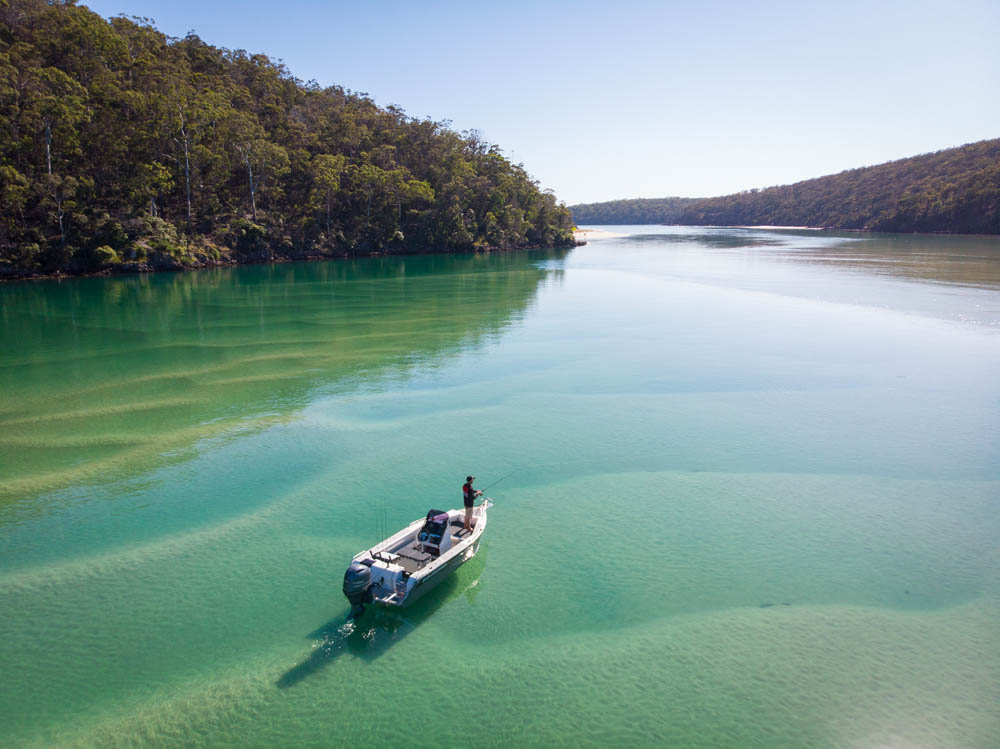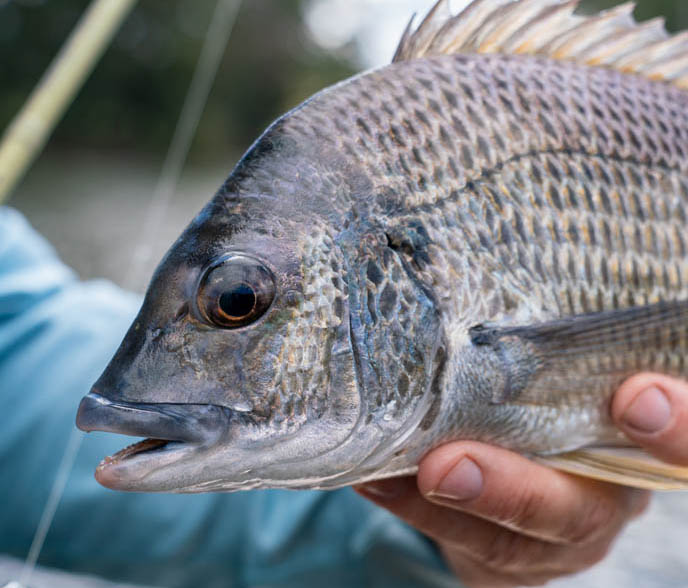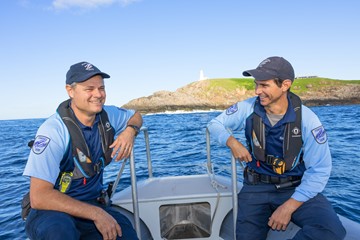- Almost 3,600 charter fishing trips were undertaken.
- 135 Recreational Fishing Trust projects, worth $23.8 million were approved in 2022-23.
- Fish-stocking projects assisted in stocking almost 6 million fish into waterways across NSW.


Recreational and Charter Fishing Participation and Effort
This survey collected information on the number and type of fish and other species caught during the reporting period. Detailed analysis of the data will estimate the total number of fishing events undertaken, number of people who went fishing and fish caught state-wide.
The Recreational Fishing Licence Fee and Trusts
The many projects run using funds from the Trusts funded are diverse, encompassing research, education, habitat rehabilitation, fisheries enhancement, stocking, facilities, access and enforcement. In 2022-23, a total of 135 projects worth $23.8 million were approved for funding from the Recreational Fishing Trusts. 99
NSW Recreational fishing licence types sold 2022-23 99
- 3 Days
- 1 Month
- 1 Year
- 3 Years
Research is another priority area with the Trusts supporting funding for fish and recreational fishing research projects, many of which involve citizen scientists in observations and data collection. This research provides essential scientific information to help ensure the sustainable use of our fisheries resources. Two important long-term projects, that are funded by the Trusts are the Game Fish Tagging Program (GFT) and the Research Angler Program (RAP).
The GFT continues to play a vital role in educating anglers and the wider community about responsible fishing practices and the benefits of catch and release fishing, while also continuing to build strong relationships with research organisations, clubs, associations and other key recreational stakeholders. In 2022-23, more than 10,860 fish were tagged and their associated tag cards entered into the database, along with 460 reported recaptures. It was a particularly productive season for inshore black marlin, with over 2,950 being tagged and released. There were also 45 black marlin recaptures reported for the season which is the highest tally in over 22 years.
The RAP also continues to play an important role in not only gathering data but building long-term relationships with participating anglers and tackle shops. The program continues to work with fisheries researchers to determine data needs while also exploring new ways to get anglers involved in citizen science. Recently this has included anglers collecting fin clips for genetic samples of fish populations. This ongoing collaboration has also resulted in deep water species such as Bass Groper, Bar Cod and Hapuka, being added to the frame collection list in 2022-23. In 2022-23 there was increased angler participation in the program and over 1,620 fish frames donated.
Stronger Primary Industries Strategy
Operation Mulloway Assist
Strategic Outcome

- 6.3 Regulate natural resource access now and for the future

On 1 July 2022, NSW DPI Fisheries compliance launched a new statewide operation, Mulloway Assist. The mission of the operation is to detect and deter illegal take and sale of Mulloway; ensure lawful catch of Mulloway by commercial fishers is accurately recording in their catch and effort records; record instances of Mulloway bycatch across all fisheries; and educate across all fisheries the depleted status and measures to reduce mortality. In mid 2023, NSW DPI Fisheries became aware there were large numbers of juvenile Mulloway in many estuaries across the state, following elevated recruitment after three years of high rainfall and associated high estuarine flows. In response, NSW DPI Fisheries developed a communication strategy that provides tailored advice to commercial and recreational fishers to take all possible precautions to limit potential bycatch of undersized Mulloway or other non-target species.
In 2022-23, Fisheries Officers operating under Operation Mulloway Assist:
- Detected 65 offences relating to illegal fishing of Mulloway
- Issued $13,600 worth of fines
- Commenced prosecutions against 4 commercial fishers' relation to illegal take or possession of Mulloway
- Seized 471 Mulloway
- Inspected 809 recreational fishers and 106 commercial fishers who were fishing for Mulloway; and
- Inspected 77 Fisherman’s Cooperatives and/or other places in which fish are sold.
Operation Mulloway Assist is a fantastic example of the work done by the dedicated NSW DPI Fisheries compliance teams in ensuring that fish stocks are protected for current future generations. DPI Fisheries will continue to monitor the stock levels of Mulloway to ensure the effectiveness of the management arrangements, with Fisheries Officers continuing to inspect both recreational and commercial fisheries ensuring the rules being followed. DPI Fisheries will also continue to work closely with all fishers to ensure the future of one of NSW’s most prized fish species.


